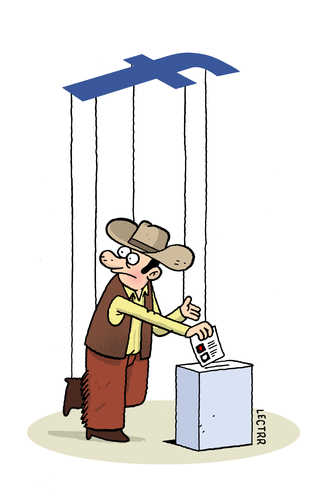Does this person exist? I challenge you.
During the last years, artificial intelligence technologies have improved a lot. Using several new techniques, for example generative adversarial networks, AI systems are now capable of producing images and videos which look almost identical to normal photography.
Generative adversarial networks exist of two different AI networks which are designed to compete against each other. One of these networks is trained to produce extremely realistic images, whereas the other network is trained to detect fake images. The former network will be rewarded for undetected fake images, whereas the latter network will be rewarded for detecting fake images. Based on this model, both networks are continuously competing against each other and improving the ability to do their respective tasks.
Two of the most known examples of generative adversarial networks are the generation of fake images and DeepFake videos. A really interesting but also scary example of the generation of fake images is the website thispersondoesnotexist.com. Every time you refresh this website, you will be shown another face which is uniquely generated.. While sometimes the images show obvious inconsistencies such as visual inconsistencies, other images can barely be identified as fake.
Within the near future, it will become difficult to find the difference between real and fake images. This can have severe consequences, the impact of fake images of politicians can be really big. For example, a fake image of a presidential candidate visiting a prostitute can have a permanent impact on their reputation.
How do we currently recognize the difference between real and fake images? The most common characteristics of fake images generated by GAN’s are inconsistent backgrounds, weird clothing, ears or earrings which aren’t matching and strange hairs. Do you think that you are capable of recognizing the differences between real and fake images?
I would like to challenge you. I have made a collection of 5 images, can you identify which images are real and which are fake? Please let me know in the comments!
Person A:
https://gyazo.com/d096f8b1bd9479b3b3c41a82927fe6a9
Person B:
https://gyazo.com/a94b8142b19b2d38edbe2ca3932ad8ad
Person C:
https://gyazo.com/9afcbe9ceae191b8091543f71c33a6ff
Person D:
https://gyazo.com/bd807f03a20b17d9430dcbc317f7675a
Person E:
https://gyazo.com/f48038b1006fa97d7975bd8e3c04daa9
Sources:
thispersondoesnotexist.com
Goodfellow, Ian; Pouget-Abadie, Jean; Mirza, Mehdi; Xu, Bing; Warde-Farley, David; Ozair, Sherjil; Courville, Aaron; Bengio, Yoshua (2014). Generative Adversarial Networks (PDF). Proceedings of the International Conference on Neural Information Processing Systems (NIPS 2014). pp. 2672–2680.
Imagined by a GAN (generative adversarial network) StyleGAN2 (Dec 2019) – Karras et al. and Nvidia


